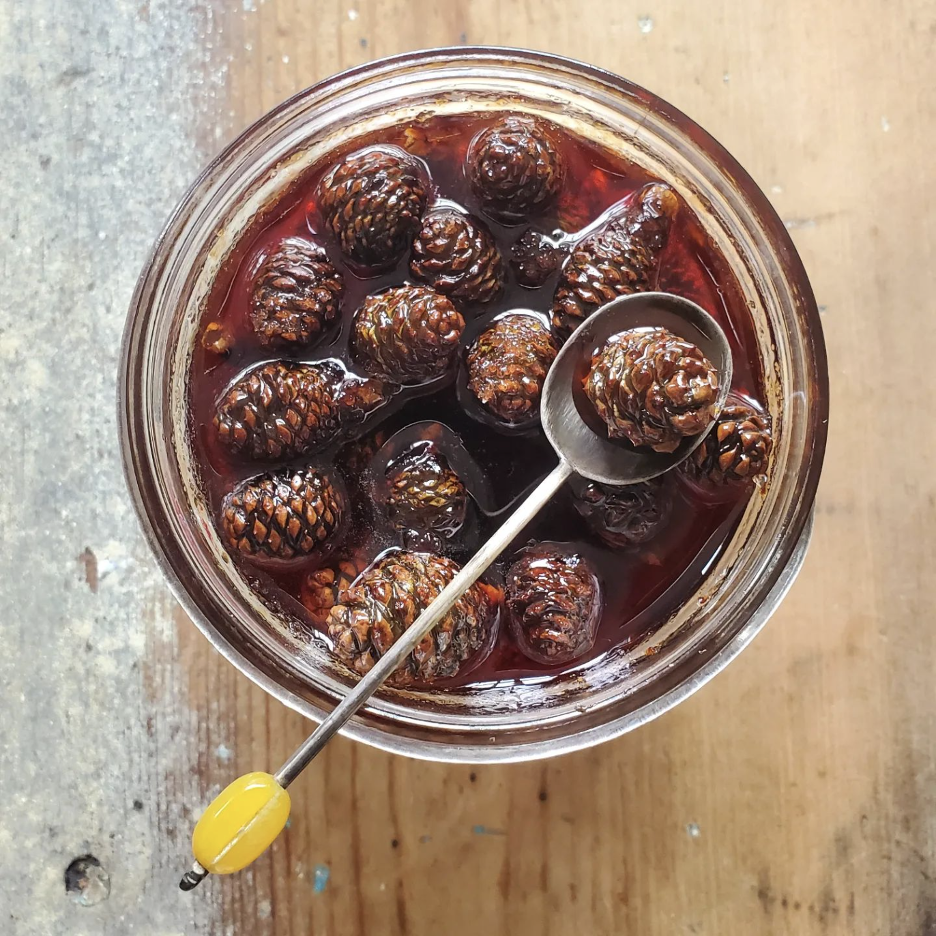Is it survival, or simply an urban guerrilla food hunt?
Brooklyn forager finds her treasures on land and water

Armed with little more than a knife, an old Herschel backpack, and generally inexplicable footwear — flip flops or flats no matter the terrain — Brooklynite Marie Viljoen points out the delicious ingredients hiding by or under Brooklyn’s bridges, marine ways, and popular pedestrian paths. Any given weekend you can find her leading a troupe of wild-edible-curious folks through New York City’s parks and green spaces.
A self-taught recipe developer and forager, Viljoen has been leading foraging tours for nearly eight years. At the end of each walk, the backpack comes off and Viljoen unpacks a small feast. The menu changes with the seasons and the vagaries of Viljoen’s tastes and inspirations (some of Viljoen’s recipes are available in her book, Forage, Harvest, Feast). Recent walks featured deviled eggs with miso fermented pinecones, cabbage confit with juniper and elderberry, bread with dandelion greens, and “forest toddies.”
Though foraging has gained newfound popularity in recent years, it is a trend with undeniably ancient roots. For Brooklynites, including Viljoen herself, it presents the opportunity to learn more about the landscape of the northeast and reverse engineer the natural history of their neighborhood.

Brooklyn Boro
View MoreNew York City’s most populous borough, Brooklyn, is home to nearly 2.6 million residents. If Brooklyn were an independent city it would be the fourth largest city in the United States. While Brooklyn has become the epitome of ‘cool and hip’ in recent years, for those that were born here, raised families here and improved communities over the years, Brooklyn has never been ‘uncool’.